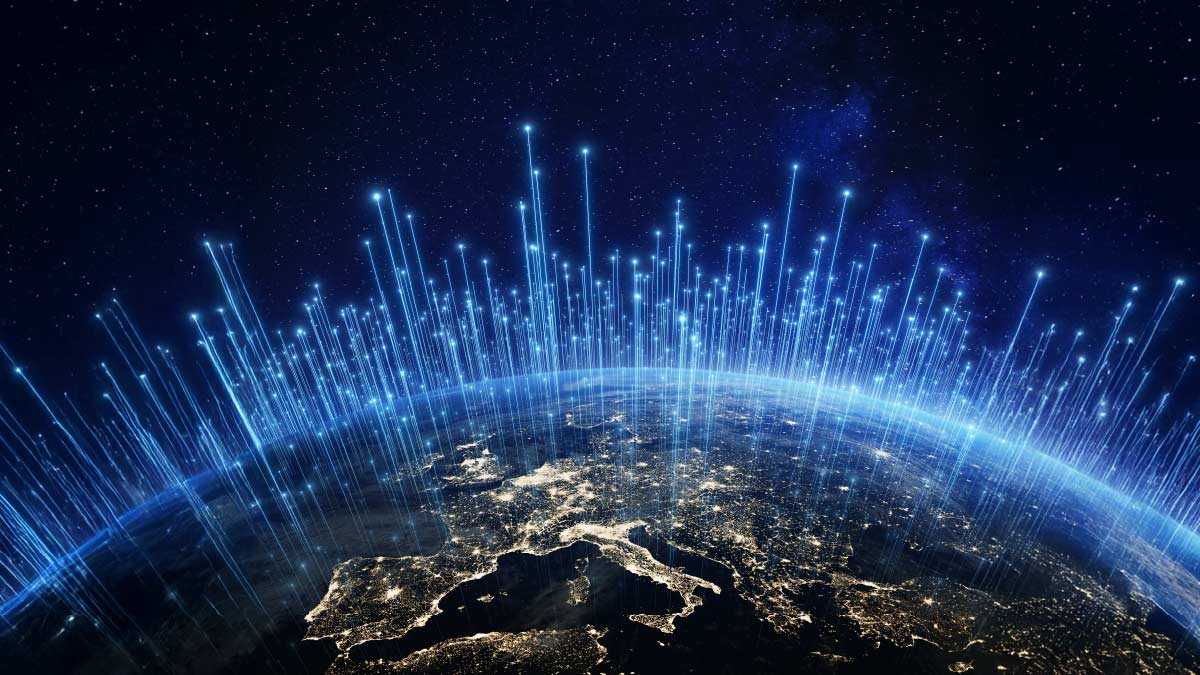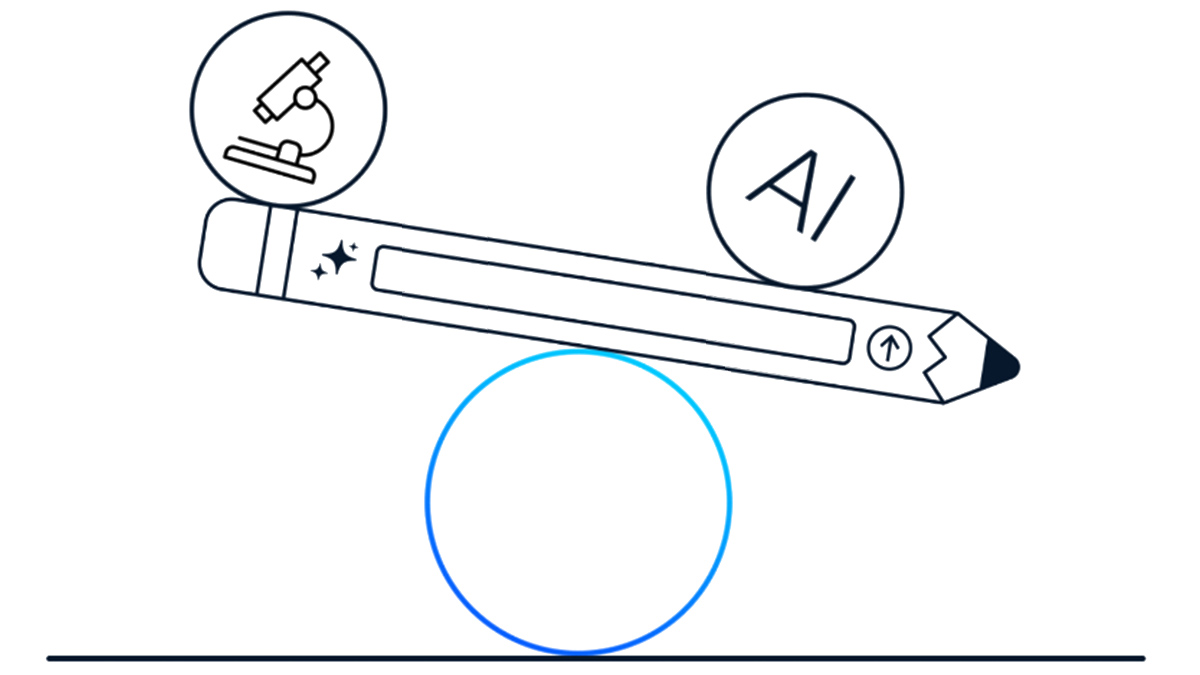Having a seamless, secure experience on any device anytime, anywhere? Cisco’s very likely behind it — on multiple levels and often behind the scenes, in everything from networking and security to AI and collaboration.
As Cisco CIO Fletcher Previn has said, “Almost every packet on the internet is moving through Cisco equipment.”
So, as thousands descend on Las Vegas this week for the annual Consumer Electronics Show, it’s good to remember that Cisco solutions are built into our hyperconnected lives in often invisible, yet critical ways. Because Cisco is making the connected world a much more efficient and secure place, while supporting much of the amazing innovation at CES.
Let’s look at four essential areas where Cisco innovations are impacting our lives: artificial intelligence, security, transportation, and sustainability.
For AI to work effectively, it needs… AI
In 2023, AI advanced rapidly, as consumers took to Generative AI in a big way. All as other AI applications delivered greater efficiency, sustainability, and connectivity across industries and in our day-to-day lives.
At the same time, AI is taking cloud traffic to the next level. Networks need to be ready.
That’s where Cisco comes in.
“There’s nobody better at moving data around than Cisco,” said Jonathan Davidson, EVP and general manager of Cisco Networking.
As networks get larger and handle more complex tasks, IT can use AI to help manage the spiraling demands. AI can also make their systems simpler to operate. The net effect is networks that are more secure, stable, and scalable. This is the idea behind Cisco Networking Cloud.
“We are simplifying networking everywhere for every customer at every scale,” Davidson stressed in a Cisco Partner Summit keynote last year. “We are converging our management platforms with the Cisco Networking Cloud, which is our vision for both on-premises as well as cloud-operating models. This is going to help you manage your customer's Cisco networking infrastructure products from one place, and help them to deliver secure, simple, predictable experiences to all of their end users.”
It all boils down to a great experience — both for Cisco’s customers managing complex networking environments, and for their customers, consumers using increasingly sophisticated electronics in myriad ways.
AI also raises concerns for consumers. This powerful technology needs to be used responsibly and ethically, so that it does not erode privacy or human rights. With its Responsible AI Framework, Cisco is an industry leader in ethical AI, with clear guidelines that any organization can adopt.
If it’s connected, it needs to be protected
As one of the largest security vendors in the world, Cisco is working behind the scenes to defend against cybercriminals on every front. You can’t be a great networking company without integrating security pervasively — and building it into every product and solution from the earliest design stages.
At Cisco Live Melbourne late last year, Jeetu Patel, Cisco’s EVP and GM for security and collaboration, explained some of the challenges facing today’s security teams.
“There’s about 3,500 vendors in the market on average,” Patel said. “Most companies have about 50 to 70 products within their cybersecurity stack. And it’s frankly getting to be untenable.”
Compounding the complexity, every year we add millions more bandwidth-hungry devices, including the amazing ones debuting at CES this week. And the massive amounts of data they generate are spread across a dizzying array of clouds, networks, and apps, all of which can be vulnerable, if not properly secured at every level.
Cisco’s AI-powered Security Cloud cuts through these layers of complexity, with an end-to-end platform strategy.
“Cisco Security Cloud,” Patel explained, “protects the user. It protects cloud and cloud infrastructure. And it protects against a breach that might occur — and detects, responds, and remediates that breach as quickly as possible.”
For consumers, that depth of security isn’t always obvious. Because when security works, it’s invisible. But it’s essential for every connected device, user, and experience. By keeping businesses of all sizes and kinds secure, Cisco protects their users (aka you, the consumer). So, whether the consumer tech at CES is related to gaming, banking, entertainment, or any other area, it’s a safe bet that Cisco is contributing to its data privacy and security.
Getting around, connected and secure
Consumer electronics shows weren't always the first place one would expect to see cars. But our automobiles and highways are evolving into hyperconnected ecosystems, as roads, traffic signals, charging stations, and, of course, connected vehicles share massive amounts of data across multiple clouds.
This week, the next-gen Indy Autonomous Challenge (IAC) racecar on display at CES will demonstrate just what’s possible. With networking support from Cisco, this fully autonomous vehicle is competing this week in a race at Las Vegas Speedway with cars routinely accelerating past 150 mph.
For those who drive at safer speeds, Cisco’s mobility solutions (especially 5G), IoT, and, of course, security, are nevertheless making a new automotive era possible.
“Cisco works with over 32,000 transportation organizations in 169 countries worldwide and has 25,000 patents in the transportation space,” Jason Royes, a Cisco senior manager for Customer Experience wrote in a blog last year. “Cisco also partners with automotive OEMs to deliver unparalleled in-vehicle experiences like Webex in Audi Vehicles.”
Speaking of Audi, their Edge Cloud for Production platform, in partnership with Cisco, represents some of the most expansive smart-factory innovation today, enabling everything from efficiency and productivity to sustainability and precise quality control.
“Cisco is a key part of the Edge Cloud,” Samuel Pasquier, VP of Cisco’s Industries Product Group (IPG), told the Cisco Newsroom last year. “There’s a lot of devices on the plant floor talking to one another and collecting production-process information, so the Audi team need a solid, secure, resilient, deterministic network to make it all happen.”
Helping to build a sustainable future
Today, climate change is driving a seismic shift in consumer awareness. And smart companies are responding with more sustainable products, services, and practices.
Once again, Cisco is supporting them behind the scenes. By optimizing energy usage in connected ecosystems, while modernizing infrastructure and software, Cisco is driving transformation across a wide range of industries and solutions — in everything from transportation and manufacturing to smart buildings and renewable energy.
Take data centers. These power-hungry facilities consume an estimated 2 percent of total U.S. energy. And given the growth of technologies like immersive video and, especially, generative AI, that percentage is expected to rise. So, lessening the impact of data centers has been a major goal at Cisco.
“Cisco can help put a big dent in those emissions,” Denise Lee, vice president for Cisco’s Engineering Sustainability Office, explained in a Cisco Newsroom interview. “Our core portfolio for data center modernization targets the market from enterprise and large web scalers, along with service providers. With Cisco’s single-chip Silicon One architecture, Cisco 8201 routers consume 96 percent less energy per year than the earlier NCS 6008, while supplying 35 percent more bandwidth. And we are now moving Silicon One across our entire switching portfolio. From the chip design to planning for liquid cooling and more efficient power designs, there is an ecosystem of technology partners we are working with to design future-ready data centers.”
Buildings are another major source of emissions. In a 2022 report, the U.N. estimated that the buildings and construction sector accounted for 37 percent of energy- and process-related CO2 emissions and more than 34 percent of energy demand globally.
Cisco’s smart-building innovations can support a way forward. One is Power Over Ethernet (PoE), which uses the DC power of the network to power devices in a building or office. These can include AI-controlled lighting, environmental systems, and renewable energy sources, without the energy-losing process of converting from AC power. In its Penn 1 Manhattan office, Cisco estimates that PoE has enabled average energy savings of 36 percent over an eight-month period.
And speaking of AI, it’s bringing much greater visibility and real-time insight into energy and other systems, as well as broader campus and multi-use environments.
“We are working at the fundamental level of writing new standards around power measurement to get more accuracy in how we measure power,” Lee said, “and make that available to our customers so they can put some automation to it. And AI gives more intelligence, so that we humans can step away and let the machines do the work to optimize.”
At the same time, Cisco’s circular economy innovations are transforming practices that once doomed retired hardware to decades of slow decay in landfills. Today, that system is being replaced with one committed to minimizing waste through recycling, repurposing, and reusing.
It all adds up to a multifront commitment in helping create a better world, or as Cisco defines it: powering an inclusive future for all. So, next time you unlock your phone, hop into your car, or hope for a sustainable world, consider that Cisco is making a lot of things better for you, your favorite companies, and the planet.





